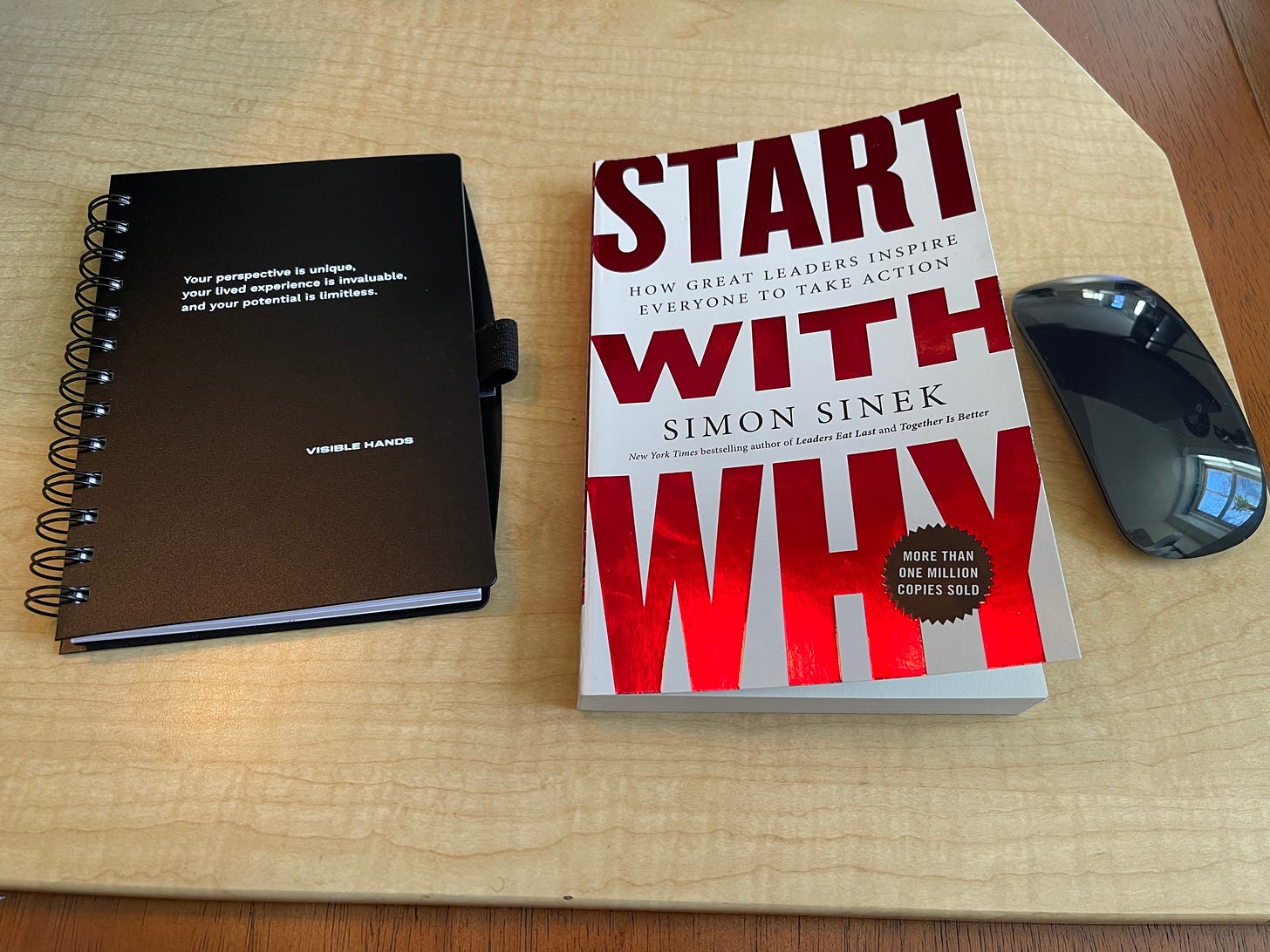Thanks again for subscribing to Cloud Musings! Last I checked, it was 38 subscribers strong. If you haven’t subscribed, subscribe to get automatic updates when I publish new editions. I will try to make it interesting sometimes!
This week I got the book Start With Why by Simon Sinek from Darrel, one of our investors at Visible Hands. Darrel along with Daniel were some of our first believers. I started reading the book and thought I would take a step back to talk about why I’m working on Oatfin.

The short answer is that I left Akamai in 2016 and wanted to focus on startups. I realized that I was not a corporate person. I come from a family of entrepreneurs. My parents are entrepreneurs and my grandparents were also entrepreneurs.
First, I started working on a fintech/blockchain solution and it was a pain dealing with infrastructure. Back in 2016, blockchain was also blacklisted by every major cloud and payment forms like Stripe. I took a break to work at a few startups to learn.
For the long answer. I’ve been a software engineer for 15 years. In my experience working at GE, Putnam Investments, Akamai, and many early stage startups, cloud infrastructure was a major challenge. The process is not only manual, but tedious and frustrating at times. If you’ve ever used the AWS or Google Cloud user interface, then you know this pain well!
For example, I was working at a fintech startup and one of my roles was to automate our cloud infrastructure. Sometimes it took days to deploy a simple app.
I was working at another healthcare startup, and it was a lot of the same frustrations. We moved from servers to server-less and then back to servers. Other challenges we faced were cloud spend, testing, security, compliance, and observability into the server-less apps. I left after 6 months to work on Oatfin because I believe the process should be simpler.
Some problems with the cloud currently:
- Painfully slow development cycle.
- Manual, tedious, time consuming and frustrating.
- Days to weeks to build a secure cloud infrastructure.
- Vendor lock-in means high cost.
- Requires expert knowledge, new staff and skills.
There are some solutions like infrastructure as code (IaC), but I don’t believe developers want to write more code to maintain the code they already have. I’ve written a fair amount of infrastructure as code. Some problems include:
- Hard to maintain manual scripts – multiple environments and clouds.
- Learning new frameworks and languages like Terraform and Pulumi.
- Doesn’t remove the complexity of infrastructure.
- Security issues with cloud credentials and secrets in code.
With Oatfin, our mission is to improve developer productivity and the development experience. We make it simple and easy to manage any application on any cloud.
Where the name comes from: the “oat” piece is because I love oatmeal. The “fin” is for fintech. Since I already had the domain name, Twitter and LinkedIn handles, it all stuck around. I also wanted to choose something that I could create the Google search presence for as opposed to something that would be confusing.
There are 3 big tenets in our application: infrastructure automation, security, and compliance. Our focus is cloud native, Docker, and Kubernetes.
Why cloud native?
Containerization provides many benefits like porting to different clouds, different operating systems as well as being easier to scale. There is no doubts that more enterprise companies will take advantage of cloud native deployments as they continue to use the public cloud.
Currently, the app allows customers to define their containers from any public or private container registry. We automate the infrastructure so they can choose the type of infrastructure they want to create. Since we have the containers, we can also scan them to detect vulnerabilities and compliance.
There are many features that make us stand out:
- Being able to clone an infrastructure to debug production issues.
- Schedule a deployment and specifying dependencies that need to be deployed before.
- Zero trust security.
- Scanning containers for vulnerabilities.
- Compliance automation.
- Team collaboration.
Our target customers are enterprise companies. As a startup, deploying native applications is very simple. You are most likely deploying a single API with a single container. But as an enterprise company, things get complicated very quickly with very little visibility. For example, you might have an API running on AWS, a database running on premise, and some other pieces running on Google Cloud. Managing these hybrid and multi-cloud environments is very challenging.
The Oatfin architecture is a good example. We have a Python and Flask API that talks to MongoDB with a Celery task queue. The Celery task queue uses Redis as a backend and message broker. The API is deployed on AWS using Elastic Container Service (ECS), the database is deployed on MongoDB Cloud, which is on Google Cloud, and we have Redis running on Redis Cloud. Finally our frontend is running on DigitalOcean along with the Celery task queue.
With that said, we’re raising our seed round and I would love to connect with investors who are excited about the cloud and developer tools space.
Thanks for reading!
Jay